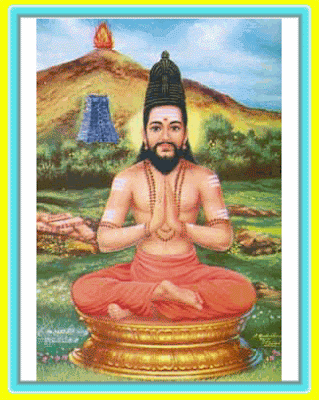Meaning and Significance
‘Murugu’ means ‘beauty’; hence ‘Murugan’ means ‘Beautiful one’. Where there is beauty, love shines; where there is love, truth sparkles. When we seek the Truth, we get liberated.
It is said that Lord Muruga taught the Indian language Tamil to Saint Agasthiar. Lord Muruga Himself sat as the leader for the academy of poets (Tamil Sangam) in Madurai (Tamil Nadu) and the language flourished as a result. Accordingly, He is called the God of Tamil.
It is written in Kanda Puranam that Saint Vasistha has said that if one worships Lord Muruga on Friday and fasts on that day, all his wishes will get fulfilled. Lord Muruga was brought up by Karthigai maids. By worshipping Him on the Karthigai star day and observing a fast, one’s problems will be removed and one will be liberated. This was a wish granted by Lord Shiva Himself to the Karthigai maids.
History of Lord Muruga’s birth
God, Who does not have a beginning or an end, takes an incarnation (avatar) to destroy the evildoers and to save His devotees. The following is about the avatar of Lord Muruga.
Goddess Parvati did penance and married Lord Shiva. Lord Shiva and Goddess Parvati’s marriage is said to be knowledge and grace joined together to give Bliss, i.e., Lord Muruga. All the deities went to Lord Shiva and pleaded Him to do something as they could not tolerate the demon Soorapadman’s cruelty. Lord Shiva took a form along with six faces (i.e., Sathyojatham, Vamadevam, Thathpurusham, Eesanam, Aghoram and Atho).
From the third eye of each face, a fire spark came out. Lord Shiva asked Vayudevan (God of wind) and Agnidevan (God of fire) to take the six fire sparks to the Ganges River. Later Ganga (the Name of the Ganges River deity) took them to Sarvana pond. The six fire sparks became six beautiful babies on six red lotus flowers. When Goddess Parvati hugged them together, they joined to become one form with six faces, twelve hands and was named Skandan (another name for Lord Muruga). Six ladies called Karthigai maids took care of Him. Hence, He was also called Karthigeyan. His other names include Kumaran, Mayilvaganan, Kaangeyan, Velayuthan, Gugan, Swaminathan, Subramanian, Saravanabavan, Vishagan, Devasenapathy, Vallimanallan, Soorasankaran, etc.
He performed several divine acts (leelas) when He was young. When Soorapadman’s cruelty went to an extreme, Lord Shiva thought it was time for his destruction. He gave the eleven Rudras eleven weapons, and Parvathi gave the Vel weapon to Lord Muruga for the war. The Vel, or sacred spear, is the most powerful weapon in Lord Muruga's armory.
Lord Muruga stayed in Thiruchendur with His army. He fought for ten days and destroyed Soorapadman and his brothers. Soorapadman had such a big ego that he did not want to surrender to the Lord. He took the form of a big mango tree. Lord Muruga’s spear split the tree and one part became a peacock and the other became a cock. Lord Muruga took the peacock as His vehicle and the cock as His flag. Soorpadman was so cruel and had such a big ego, yet he still reached such a good state -- to always be beside the Lord. Imagine what kind of state Lord Muruga's devotees would get!
About Lord Muruga (in brief)
Name : Murugan
Birth Place : Saravana pond
Date of birth Vaishaka month, Vishaga star
Father : Lord Shiva
Mother : Goddess Parvati
Brothers : Lord Ganapati and Lord Ayyappan
Wives : Valli, Devayani
Weapon : Shakti vel (spear)
Vehicle : Peacock
Flag : Cock
Aim of Incarnation : Destroying evil and saving Devotees
Place he resides : Devotees heart
source: http://www.sanatan.org/en/festivals/hindu/ksv2.htm


